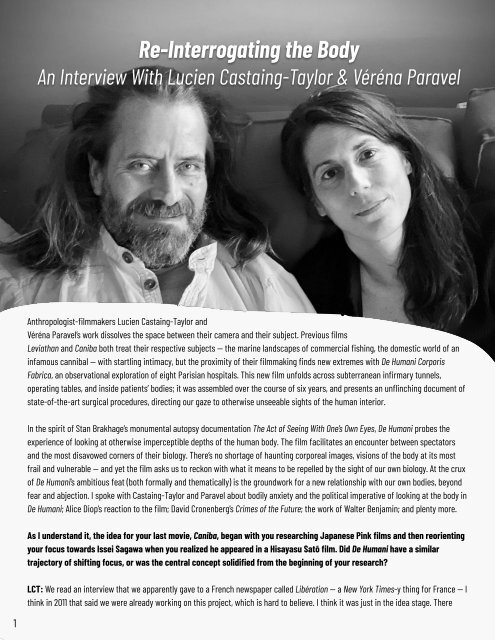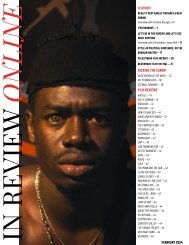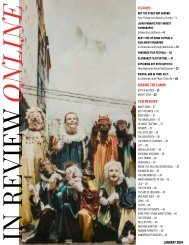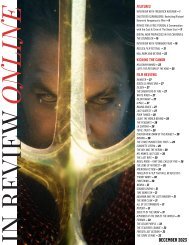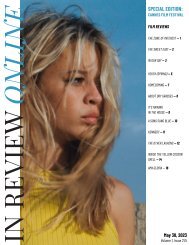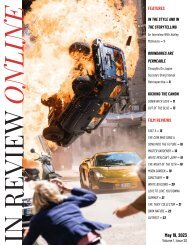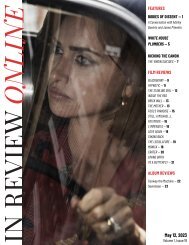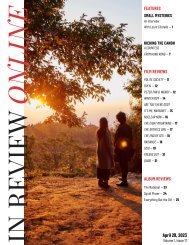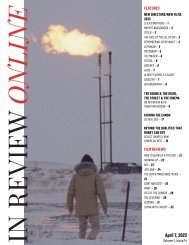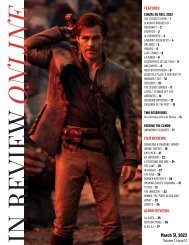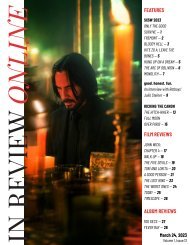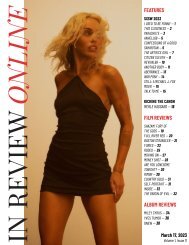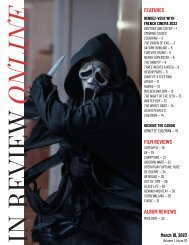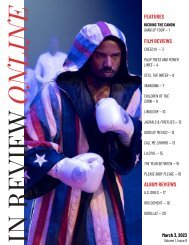InRO Weekly — Volume 1, Issue 16
You also want an ePaper? Increase the reach of your titles
YUMPU automatically turns print PDFs into web optimized ePapers that Google loves.
Re-Interrogating the Body<br />
An Interview With Lucien Castaing-Taylor & Véréna Paravel<br />
Anthropologist-filmmakers Lucien Castaing-Taylor and<br />
Véréna Paravel’s work dissolves the space between their camera and their subject. Previous films<br />
Leviathan and Caniba both treat their respective subjects <strong>—</strong> the marine landscapes of commercial fishing, the domestic world of an<br />
infamous cannibal <strong>—</strong> with startling intimacy, but the proximity of their filmmaking finds new extremes with De Humani Corporis<br />
Fabrica, an observational exploration of eight Parisian hospitals. This new film unfolds across subterranean infirmary tunnels,<br />
operating tables, and inside patients’ bodies; it was assembled over the course of six years, and presents an unflinching document of<br />
state-of-the-art surgical procedures, directing our gaze to otherwise unseeable sights of the human interior.<br />
In the spirit of Stan Brakhage’s monumental autopsy documentation The Act of Seeing With One’s Own Eyes, De Humani probes the<br />
experience of looking at otherwise imperceptible depths of the human body. The film facilitates an encounter between spectators<br />
and the most disavowed corners of their biology. There’s no shortage of haunting corporeal images, visions of the body at its most<br />
frail and vulnerable <strong>—</strong> and yet the film asks us to reckon with what it means to be repelled by the sight of our own biology. At the crux<br />
of De Humani’s ambitious feat (both formally and thematically) is the groundwork for a new relationship with our own bodies, beyond<br />
fear and abjection. I spoke with Castaing-Taylor and Paravel about bodily anxiety and the political imperative of looking at the body in<br />
De Humani; Alice Diop’s reaction to the film; David Cronenberg’s Crimes of the Future; the work of Walter Benjamin; and plenty more.<br />
As I understand it, the idea for your last movie, Caniba, began with you researching Japanese Pink films and then reorienting<br />
your focus towards Issei Sagawa when you realized he appeared in a Hisayasu Satō film. Did De Humani have a similar<br />
trajectory of shifting focus, or was the central concept solidified from the beginning of your research?<br />
LCT: We read an interview that we apparently gave to a French newspaper called Libération <strong>—</strong> a New York Times-y thing for France <strong>—</strong> I<br />
think in 2011 that said we were already working on this project, which is hard to believe. I think it was just in the idea stage. There<br />
1


